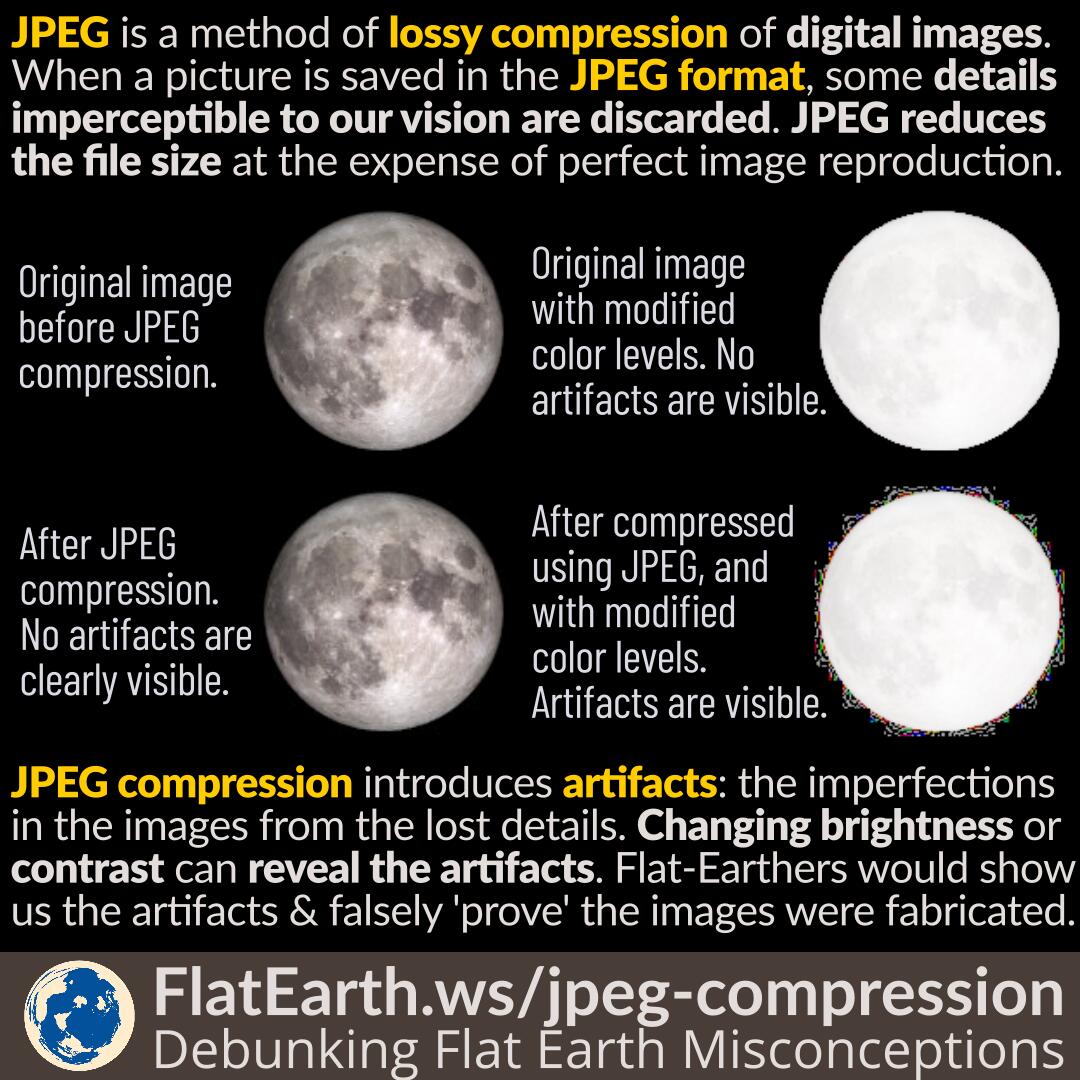JPEG is a method of lossy compression of digital images. When a photograph is saved in the JPEG format, some details imperceptible to our vision are discarded. The JPEG compression reduces the file size at the expense of perfect image reproduction.
Flat-Earthers like to perform “investigations” by adjusting brightness, contrast, levels or curve of an image to find evidence of tampering. If they find irregularities, they will proclaim the picture has been faked. In most cases, these are only JPEG compression artifacts and do not prove anything.
After a picture is saved in the JPEG format, the discarded details are lost and cannot be recovered. The compression process leaves artifacts, which is the imperfection caused by the missing details.
In many cases, JPEG artifacts are hard to notice. But if we are explicitly looking for them, depending on the compression strength and the type of the scene, finding them can be straightforward. Adjusting contrast or brightness; or using curve or levels tool in a photo editing software can easily reveal them. The existence of JPEG artifacts does not prove the picture has been faked.
The JPEG format is ubiquitous for storing photographic images and transmitting over the Internet. Practically all digital cameras store images as JPEG. By using the same “logic” employed by these flat Earthers, then most of these images can be “proven fake”, too.
References
- JPEG – Wikipedia
- Compression artifact – Wikipedia
- JPG Image Artifacts – Wikipedia


